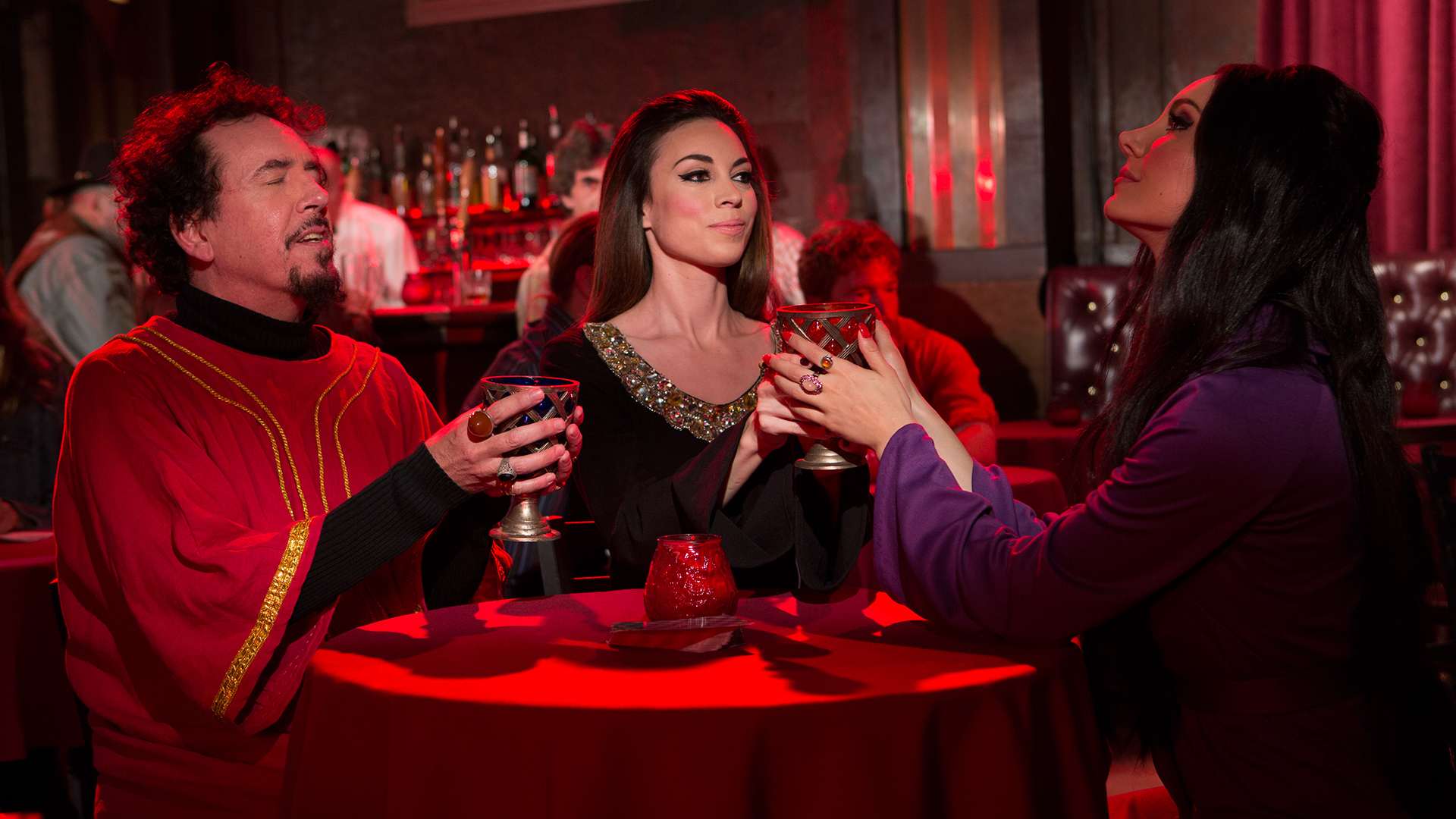
From the start of the film, she can be seen batting her eyes in what one initially assumes might be a call-back to the Bewitched nose-wrinkle. She uses her beauty and sexuality as a bait for men who describe themselves as libertines or unhappily married, aka sexists. However, she is not quite the Stepford Wife that one might think. She makes herself, essentially, the embodiment of male fantasy. When it comes time for intimacy, she seduces her lovers with elaborate dances in intricate lingerie. She speaks politely and is never seen without make-up. She is often cooking decadent cakes or donning renaissance gowns while riding horseback. Throughout the film, Elaine creates a world for herself that is heavily influenced by male-perpetuated ideas of femininity, ultimately masking herself in layers of Bardot-esque eyeliner and Audrey Hepburn LBDs. And this is exactly what she does… or so it would seem. After hearing that Trish will often refuse her husband of some of his fantasies, Elaine scolds that women should always give men what they want. In the beginning of the film, she sits down to tea with Trish, a self-proclaimed feminist who has been married for ten years. The attitude towards witches and Wicca is mostly one of bigoted tolerance - as though witches have been publicly granted rights that the anti-intellectualist bar-dwellers can’t override, despite their disdain (sounds familiar, right?)Įlaine herself, after losing weight and gaining empowerment after her husband “leaves,” willingly codifies herself according to the male-fantasy. In a scene where Elaine meets up with her friend and coven member Barbara at a Burlesque show, men can be heard having discussions about how witches used to hide, but now they seem ubiquitous in society. This is because the “witch” is ostensibly equated to a sexually liberated woman, and the townspeople treat Elaine and her coven members as such. While the film’s aesthetic and score set the viewer up for the typical supernatural tropes of 1960’s technicolor horror, we are instead greeted with a more realistic sense of witches which somehow opposes and aligns with our own world’s cultural conceptions. The Love Witch is an open allegory with a feminist agenda. From there, she quickly learns to transmogrify “sex magic” into “love magic,” but ultimately leaves each of her dalliances for dead. After suffering years of gaslighting and emotional abuse in a previous marriage, Elaine is quickly scouted by a coven while dancing in a burlesque nightclub.

The film follows Elaine Parks (Samantha Robinson), a newly inducted yet gifted, member of a Wiccan coven who is quixotically obsessed (or, in her own words, “addicted) to love. Well, dear readers, let me tell you it was worth every moment of the wait. I remember thinking several times that this 1960’s B-Horror pastiche could not possibly live up to the hype which I, myself, have ascribed to it. Usually, and in my personal experiences, a build-up of anticipation that long often results in disappointment.
#LOVE WITCH MOVIE#
It took until just yesterday for the movie to come to one of my city’s indie theaters. The still became a fascination which led me to interviews with the film’s feminist auteur, Anna Biller, which eventually led me to a trailer, then back to some interviews, and so on for about nine months. It all started with a still of Elaine Parks’ heavily shadowed eyelids and a tea dress with ruffles too glorious for words.

I found out about The Love Witch nearly a year ago. *Please note that there are some scene descriptions here, which may constitute a spoiler for some.


 0 kommentar(er)
0 kommentar(er)
